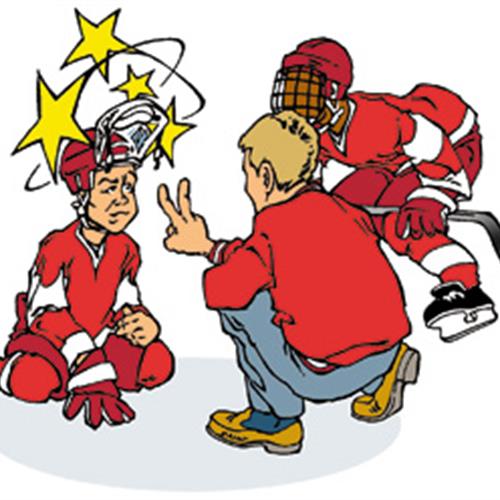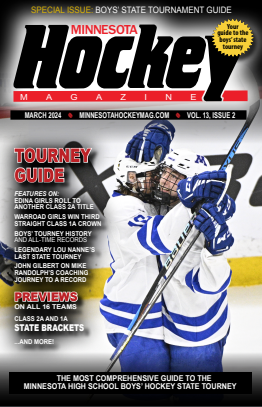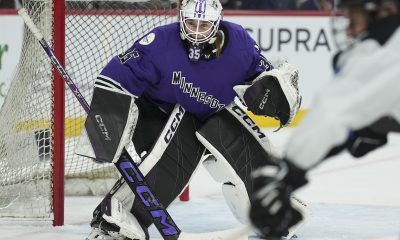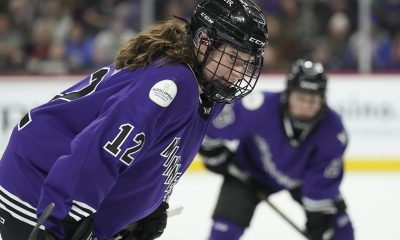
Research I conducted on Hockey Concussions
Introduction:
Concussions in contact sports; we have all had our “bell rung, as the old adage goes, when getting hit in the head during a game or practice. When it happens, most coaches will tell you, “You’re okay, take a break, and we will get you back in the game when you feel normal”. In most cases, players in the game do not feel normal and do not want to let their teammates down, so they will tell a coach or trainer they are actually feeling fine and they want to head back onto the field of play. This is where it can get dangerous for an athlete at any level, in any contact sport.
The focus of this article will be on the game of ice hockey and concussions, from the youth level of play all the way up to the National Hockey League (the “NHL”). The analysis will be broken down into different categories, as well as into two sections: one from the amateur and youth side, and the other from the NHL and professional side. The questions that will be analyzed are the following:
1. Are the necessary precautions, being achieved in accordance with the governance of rules of hockey to protect the participants of the sport?
2. Does the NHL have a duty or responsibility to keep players safe on the ice?
3. Do the governing bodies and rules committees who oversee youth hockey have those same responsibilities to the players at the different levels of competition?
4. In the NHL, the players are the main assets to their respective teams. How much risk are they taking while playing the game of ice hockey and do they think of these risks?
I conducted this examination and investigation utilizing all the different personnel
involved for the game of ice hockey, including, coaches, officials, governing bodies for hockey, medical doctors, players, and reporters. Before examining the game of ice hockey from all levels of play, it is necessary to focus on a few of the preliminary issues that are involved with this research. First time to examine the medical side and what causes concussions.
WHAT IS A CONCUSSION?
Each year in the United States, about a million people are hospitalized or treated in an emergency department for a concussion, according to the Centers for Disease Control and Prevention (CDC)(Centers for Disease Control Website). Because many concussions are not treated, the CDC estimates the actual number of concussions is much higher: about 1.6 to 3.8 million a year. An estimated 300,000 of these occur in sports or recreation-related activities. Contact sports, such as football and boxing, are among those most likely to lead to concussion, but so too are falls and collisions sustained in bicycling, skiing, horseback riding, soccer, basketball, and other non- or low-impact contact sports. Falls and motor vehicle accidents also cause many concussions. A concussion, also known as a mild traumatic brain injury, is caused by a blow to the head or body, an impact against a hard surface, shaking, or spinning. Concussion occurs because the body suddenly stops, causing the brain, which floats in cerebrospinal fluid, to be jarred against the skull. Symptoms of concussion include loss of consciousness, headache, nausea, blurred vision, confusion, dizziness, loss of balance, lightheadedness, ringing in the ears, fatigue, a feeling of fogginess, memory problems, and the inability to think straight or see straight. Concussions may cause emotional or behavioral changes; for example, victims may throw a temper tantrum or cry for an extended period. With more severe concussions, symptoms can also include worsening headaches, convulsions, seizures, vomiting, dilation of the pupils, weakness, numbness, and the inability to wake up. Doctors call this phenomenon second-impact syndrome. A second concussion suffered while a player is recovering from the first could be disabling or fatal, according to the American Association of Neurological Surgeons. The second concussion, even if it’s not severe, can cause vascular congestion and increased intracranial pressure, leading to acute brain swelling. (Neurology Now, September/October 2007, pages 22-23, 27-32.)
CTE or Chronic Traumatic Encephalopathy:
A result of numerous concussions is Chronic Traumatic Encephalopathy, (CTE),is a progressive degenerative disease of the brain found in athletes (and others) with a history of repetitive brain trauma. This trauma, which includes multiple concussions, triggers progressive degeneration of the brain tissue, including the build-up of an abnormal protein called tau. These changes in the brain can begin months, years, or even decades after the last concussion or end of active athletic involvement. The brain degeneration is associated with memory loss, confusion, impaired judgment, paranoia, impulse control problems, aggression, depression, and, eventually, progressive dementia.( Sports Legacy Institute, website, Boston, MA)
Concussions in Hockey, the Risk, Michael Stuart, M.D. Mayo Clinic, Rochester, MN:
One of the key medical personnel in USA Hockey on injuries and how to prevent them is Dr. Michael Stuart, of the Mayo Clinic in Rochester, Minnesota, where he is the Co-Director of Sports Medicine as well the Vice-Chair, of Orthopedic Surgery. The following are his observations when it comes to head trauma in the sport of ice hockey from the amateur level, as well the professional level.
Dr. Michael Stuart, observations:
Size and speed of players play a big part, as does the torque of the hit or check. You don’t need to hit the head of player to cause concussion. A body shot with whiplash effect can cause problems. Neck muscles do come into play for checking. If your neck muscles are not strong, chances of a violent impact are greater from a whiplash effect. This would be one of the reasons why in the woman’s game, which is non-checking, there is a very high rate of concussions; much more than the men’s game. The physical make up of men versus woman is much different and neck strength is one of the many factors as to why in the woman’s game there are more concussions.
1. A concussion is both a blow the head and a build up with small shots to the head. What they are finding in research is that once you have had one concussion, over time it is easier to sustain another one.
2. The brain development of a child is critical, since the brain is still growing very rapidly up through the period from 10-13 years of age. There are many factors to be considered when a child sustains a concussion. The child must shut the brain down, which means, no school, no video games, no television, no noise, no light, nor any other stimulation of the brain. Neurological cells need time to heal and there is no medicine to treat a concussion or head injury. There can be no math equations, analytical thinking, or other mental activity. The brain must rest and be symptom free for three weeks. Any blow to the head is dangerous since the moving of the brain in a violent action is not what the brain was designed to do.
3. When playing hockey, the player must keep his or her head up, don’t duck checks, and learn to absorb hits and checks better. It is also necessary to make equipment better but not to make the youth players look like a gladiator. Elbow and shoulder pads should protect the player and not becomes a weapon for players. When checking a player, you don’t need to drill them through the boards or on an open ice hit, knock them out. All you need to do is separate the player from the puck and not take yourself out of the play. Children and athletes need to learn respect from parents and coaches; sportsmanship is a lost art.
Dr. Stuart also went on to say the following about the risks inherent in the sport of ice
Hockey: The chance of sustaining an injury is dependent on many variables including the
level of participation, player position, game versus practice exposure, protective
equipment, violent behavior, and personal susceptibility due to pre-existing injury and
style of play. The incidence of injury can be compared for youth, high school, Junior A,
college and professional hockey players. Injuries occur much more frequently in games
than in practice.
HEAD AND FACE
Mandatory use of standardized helmets has apparently reduced the incidence of severe head injuries with brain damage. Concussions do occur and players should always report symptoms such as prolonged headache, confusion, visual disturbance, and loss of memory or concentration.
Concussions encompass a graded set of clinical syndromes that may or may not involve loss of consciousness. A direct blow to the head, face, neck, or elsewhere on the body may cause a concussion by transmitting an impulsive force to the head. The resultant brain injury is due to a rapid onset, short-lived impairment of neurological function that resolves spontaneously. The acute symptoms reflect a functional disturbance rather than a structural injury. A recurrent blow to the head can be serious, since repeated concussions cause cumulative damage and the severity increases with each incident. After an initial concussion, the chance of a second concussion is four times greater.
Evaluation of Head Trauma:
Whenever evaluating a player with a suspected concussion, it is important to always rule out an associated neck injury. The examiner should put a hand on either side of the head to stabilize the neck until the exam is complete. It is also critical that the examiner does not move the athlete, remove the helmet, rush the evaluation, or worry about delaying the game. In the player is unconscious, the examiner should use the log roll method to turn the player supine, leave the helmet and chinstrap attached, and begin cardiopulmonary resuscitation (CPR) as necessary. After a neck injury has been ruled out, the player should be helped to the bench or locker room.
At this time, it is important to perform a “sideline” evaluation, and then repeat after 15 minutes at rest and after exertion. As of this time, there has been neither grading system nor return to play guidelines that has been validated. Common sense and caution must guide judgment. A symptomatic player should never return to play or be left alone. The player should be monitored regularly, and then medically evaluated after the injury and again before returning to play. (Michael Stuart, M.D., “Injuries in Youth Hockey: a Pilot Surveillance Strategy”. Mayo Clinic Proceedings, 70: 350-356, 1995) (Michael Stuart, M.D., “Injuries in Junior A Ice Hockey”. American Journal of Sports Medicine, 23: 458-461, 1995) (Michael Stuart, M.D., “Predictors of Injury in Ice Hockey Players: A Multivariate, Multidisciplinary Approach”, American Journal of Sports Medicine, 25 (4): 500-507, 1997)
Dr. Charles Tator, Dr. Michael Cusimano, and “Hockey Canada” Mandate with Concussions in the sport of Ice Hockey:
Dr. Charles Tator, is the Senior Scientist in the Division of Genetics and Development at Toronto’s Western Hospital, and is, one of Canada’s top brain surgeons and foremost expert on spinal cord and head injuries in sports. His findings and results from the study of concussions follow:Dr. Tator stated that 20% of children playing on hockey teams suffer a concussion each season. “Of those, the vast majority do not leave permanent after-effects,” said Dr. Tator, who is also the founder of “Think First”, a Canadian national organization dedicated to the prevention of brain and spinal cord injuries. A number of injury prevention tips for the sport of ice hockey from Dr. Tator’s organization, “Think First”, have been developed with the intent to prevent or minimize injuries to players in the sport of ice hockey. “Think First” recommends the following:
1. Coaches should be responsible for setting the tone of play and educating players about the risks of catastrophic injury.
2. All players should have proper and regular conditioning. Players should work on strengthening their neck muscles.
3. Players should wear helmets that fit snugly using the one fingerbreadth rule – only one finger between strap and chin.
4. Helmets should be replaced about every three seasons or sooner if damaged.
5. Everyone on the ice should wear a helmet.
6. Players should wear full facial protection. There have been no recorded blinding eye injuries in players wearing Canadian Standards Association certified facemasks.
7. Players should wear mouth guards.
8. Coaches, leagues, and referees should be diligent in enforcing rules such as no checking from behind. Penalties should be given for illegal play. (Dr. Charles Tator, Think First Organization)
These are some of the key precautions from Dr. Tator’s organization “Think First” in preventing catastrophic injuries in the sport of ice hockey. Dr. Tator went on to explain what happens to someone who suffers a concussion. Like a boat in a dock, the brain floats in liquid inside the skull. When the head is hit with force, the brain bangs and rubs up against the inside of the skull. Dr. Tator says the immediate steps taken following a concussion are directly related to one’s recovery. The best thing to do following a hit to the head is to see a doctor for diagnosis and rest.
There is no therapy or drug to treat a concussion. The brain needs to rest and not be stimulated by light, noise or concentration of any kind. Most people who suffer one or two concussions recover normally. Repeated concussions or, a single severe concussion can be catastrophic and lead to permanent damage. “Sports-related concussions are a significant problem. Too many children are having concussions and we need to educate parents and the public on how to eliminate this,” said Dr. Tator, Concussions can have cumulative effects on memory, judgment, social conduct, reflexes, speech, headaches, and dizziness and personality changes. (Dr. Charles Tator, Western Toronto Hospital)
When discussing the National Hockey League and concussions, Dr. Tator said that today’s players are bigger and faster. Weight and mass can play a big part in the problem with concussions in the NHL. One specific item he said which has had some affect is players being larger have longer legs due to the height. This can generate more speed when striding during skating. The end result with the speed from the legs is more injuries to players when struck or checked.
When asked about helmet research in preventing concussions to players, Dr. Tator felt that there is not enough evidence at this time to say that a helmet today can prevent concussions. Helmets prevent the following brain injuries, bruising, tearing of the tissues, lacerations to the skull and face when a cage is worn, and in rare cases skull fractures. No helmet he has seen can prevent the brain from moving around in the skull to prevent concussions. The Cascade helmet company along with Mark Messier claims to have come up with a helmet design to prevent concussions, however Dr. Tator said the helmet needs to be tested some more, and he would like to see the data on non head hits, more of the torque hits (body to body) and prevention of concussions using the helmet. Dr. Tator is very pleased that companies want to try and help young hockey players be safe.
One area of ice hockey Dr. Tator feels that really needs to be addressed is headshots. These need to eliminated from ice hockey. There is no way to prevent the incidental contact, but the deliberate contact needs to stop, and the one way is to have a zero tolerance rule on headshots. Dr. Tator said hits that Scott Stevens delivered during his career where he lead with his shoulder into someone’s head are not necessary; they are used to intimate and scare the other players. When young players see those hits, they feel that they should do the same, and this results in a lack of respect that develops with the younger players.
One new directive he discussed was the fact that they don’t grade concussions anymore, since all of them are serious.
Todd Jackson, Hockey Canada:
Todd Jackson, manager of safety and insurance with Hockey Canada, says the number of concussions, which happen in the 550,000-member league is not recorded into a database. Hockey Canada currently implements and the safety steps are being taken to prevent and limit concussions. The important aspects are:
1. The education process is very important to Hockey Canada. This includes trying to reduce and minimize the risks with the game of hockey, increase awareness of how the game should be played, playing properly, and watching for hits to the head and neck area.
2. Proper equipment for kids’ protection should be mandatory. This includes drawing the line with less protective equipment, and teaching kids and educating them about face masks, dangers of hits from behind and hits to the head.
3. Respect of players at every level of play must be encouraged and enforced, along with, skill development, which includes the very important skills of skating, passing, and shooting.
4. Respect both ways in hockey players, between players, need to be aware on blindside checks, delivering a hit and taking a hit.
5. Teach kids not to duck on boards with checks.
6. Mandatory chinstraps are worn at all times on the ice.
Todd also went on to say that, “Helmets aren’t designed to prevent concussions, they’re designed to prevent facial injury and skull fractures. When the brain is squashed back and forth in a concussion, a helmet will not prevent that injury,” Jackson said (Interview, Todd Jackson, Hockey Canada). Paul Carson from “Hockey Canada” also added to the discussion about concussions in ice hockey. Paul is the director of development of hockey with “Hockey Canada”. He discussed the following points.
1. Officials need to be diligent when it comes to calling hits to the head or hits from behind.
2. Respect needs to come into play more when players are on the ice.
3. Ducking checks along the boards to avoid being checked are very dangerous, and the player could be kneed in the head on the play.
4. Players at the youth level need to learn how to absorb a check and to deliver a check without hurting all the participants involved.
5. Basics of the game need more emphasis, such as skating, shooting, passing, and other basics of the game.
6. Need to introduce some basics to kids when it comes to checking aspect of the game. Players who are 7, 8, 9, or 10 years of age need to learn some basics so when they get older in the Pee Wee and Bantam level of play.
7. Equipment needs to be made a little softer and get rid of the hard plastic caps on elbow pads and shoulder pads. They can be used as weapon on a hit to the head.
End of Part One:
In part two of the series, two men who are very involved in the safety of game of hockey for all involved. Tom Babson from the Sports Legacy Institute at Boston University and Hall of Famer, Ken Dryden from the Canadian Parliament. Tom shares the ten step plan that they have developed and Ken examines the game of hockey from a historical perspective.



















